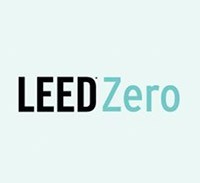

The USGBC has developed LEED Zero, a complement of LEED that verifies the achievement of the null net objectives of the buildings and signals the market leadership in the built environment.
LEED Zero is based on LEED by recognizing specific achievements in construction operations, including zero zero carbon, energy, water and zero net waste. LEED Zero rewards projects that have used LEED as a framework to address important aspects of green buildings, such as health, and have taken their buildings to the next level through design and operation towards zero net objectives.
While the LEED system provides a system of strategies and a holistic approach to buildings, driving the reduction of carbon emissions through the choice of materials and energy efficiency, among other strategies, LEED Zero Carbon focuses on the balance of carbon emissions that were caused and may be avoided.
Buildings are responsible for 40 percent of energy-related greenhouse gases, and the sector as a whole is not yet investing its contribution; As the population grows and the per capita space increases, the relative importance of buildings to the climate also increases.
In this context, the LEED ZERO system understands the importance of doing everything possible to take advantage of tools and resources to expand carbon emission reductions and minimize the use of resources associated with buildings. LEED users are accepting the challenge and want to show that they are doing their part to face climate change.
The LEED Zero Carbon certification provides a comprehensive approach that goes beyond the carbon associated with energy use, including transportation, water and waste, as well as optional built-in carbon.
The certification is designed to include the main categories of carbon production operations:
LEED Zero represents a new level of achievements in green building that is not only attainable, but is the goal of LEED certified projects worldwide.